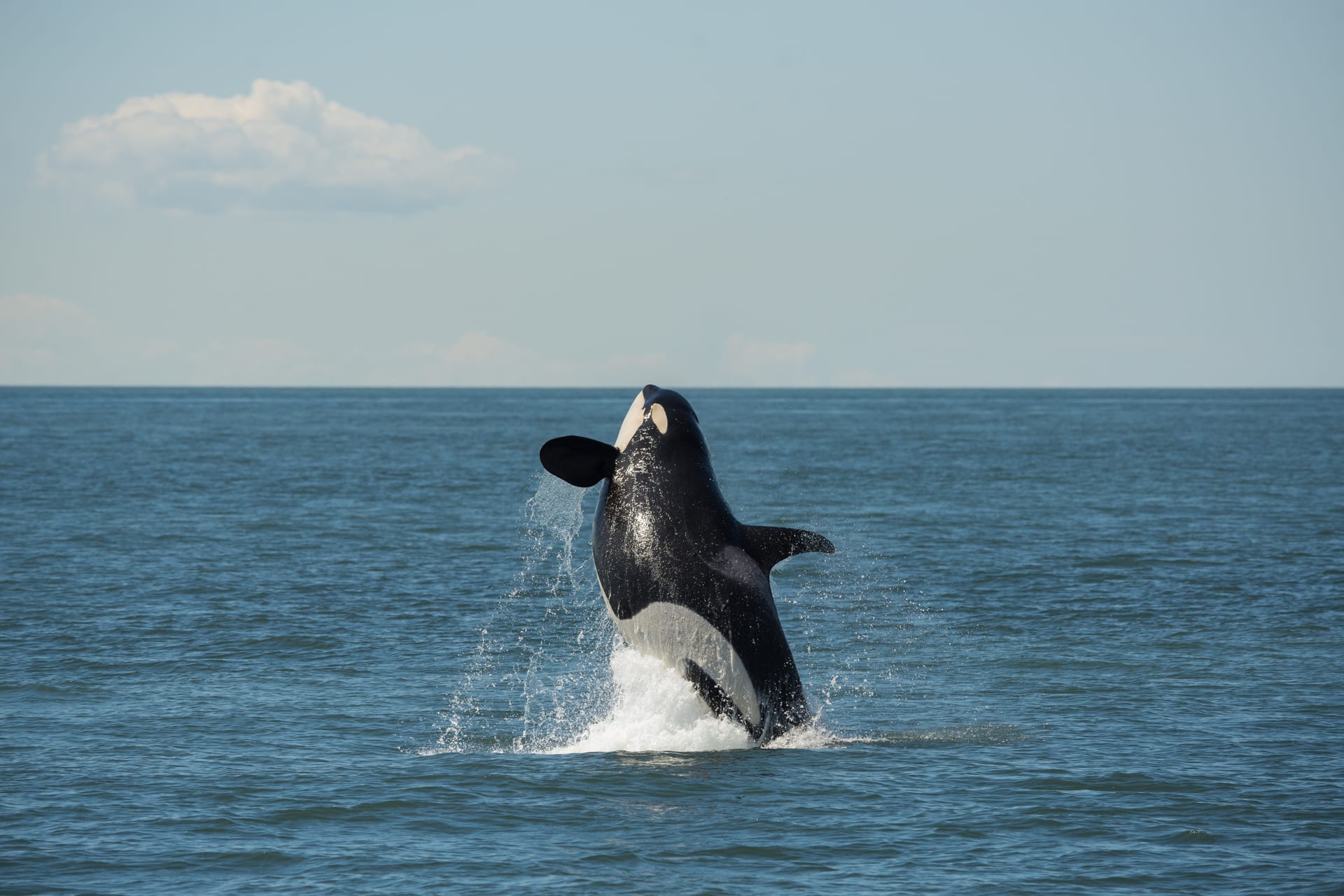
It has long been known that whale poop is a rich source of nutrients, and now new research shows that the great whales, such as blue, minke and humpback, were in fact the first farmers of the sea, supporting huge populations of marine life by seeding the ocean with essential minerals.
Whale poop creates a circle of life; by recycling iron, nitrogen and phosphorus, it fertilizes the ocean, nourishing huge blooms of the smallest marine plants known as phytoplankton, providing food for krill, tiny shrimp-like creatures that in turn feed some of the largest animals to have ever roamed our planet.
Modern research methods have enabled a better understanding of just how much food these leviathans consume. Suction-cup tags with cameras follow these ocean giants through swarms of krill, and help estimate just how much food is ingested as their huge mouths take in gallons of seawater.
Scientists now believe these whales consume 3 to 4 times more than previously thought—up to 16 tons in one blue whale mouthful—which puts predictions for the amount of life at the base of the food web several orders of magnitude higher than ever imagined. So much that in fact, researchers estimate historic krill populations would have been twice the weight of our annual global fisheries catch!
When predators are removed from ecosystems, their food source usually multiplies; wolf eradication across North America saw deer populations explode. However, as whaling decimated our oceans’ gentle giants—some estimate the loss of over 2 million whales—krill populations also fell, contrary to all expectations. Despite the end of commercial whaling in the Southern Ocean, and the slight recovery of some great whale populations, their numbers are still too low to produce enough fertilizer to drive krill production.
To restore the broken cycle, some scientists are considering artificially seeding the Southern Ocean with iron to promote the growth of plankton to feed krill, in turn increasing whale populations, so that they may once again return to being the natural farmers of our seas.

Southern Resident killer whale J19 plays with kelp.
Conversely, farming systems invented by humans to seed the oceans with young salmon have failed to deliver what these whale farmers’ fertilizer can. Despite a whole host of evidence about the lack of success of hatcheries, and the proven negative impacts on populations of already-struggling wild Pacific salmon, hatchery production continues, and apparently, without end.
Testimony in a recent lawsuit showed NOAA Fisheries proposed to raise more hatchery fish in an attempt to replace Chinook salmon caught in southeast Alaska fisheries. Yet west coast hatcheries are already pumping out millions of small fry each year; the fisheries catch is decreasing, and the Southern Resident population is the lowest since studies began.
Washington State continues to promote its farming credentials by increasing hatchery production, and in so doing is violating its own regulations—according to a recent lawsuit by our friends at the Wild Fish Conservancy. We, and they, are deeply troubled that Congress may authorize an additional $400 million for west coast hatchery production, which could further endanger wild salmon.
Perhaps we should leave the farming of our seas to nature, and the evolutionary processes that shaped the wild ecosystems and wildlife we’ve inherited. Both could recover if we intervened less, and supported more, such as with habitat restoration, and by limiting human impacts.
Killer whales feces on the surface of the water prior to collection for analysis.

Thanks to increased protections, the Salish Sea continues to see a resurgence of marine mammals. The return of baleen whales such as minke and humpback is to be celebrated, as their presence is a sign that the ecosystem can once again support them, and in turn they will support it.
At Wild Orca, we will compare the health of these whales with the endangered Southern Residents by collecting and analyzing whale poop. In addition to providing invaluable insights into whale well-being, these natural emissions power the circle of life; providing nutrients to fertilize the ecosystem, growing food to feed salmon, that in turn can feed endangered orcas.






